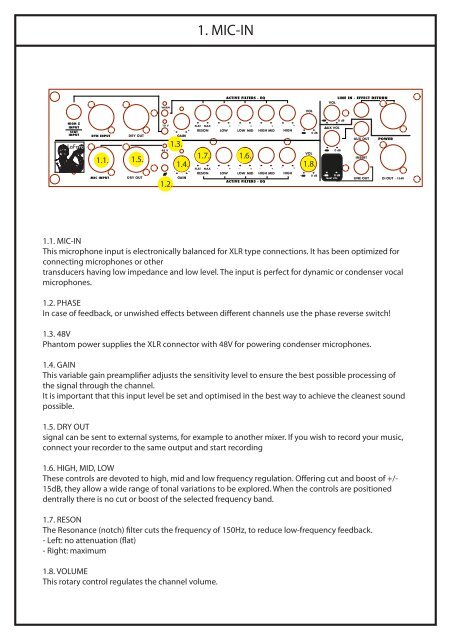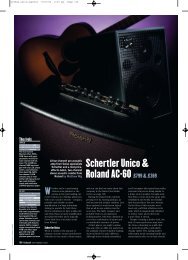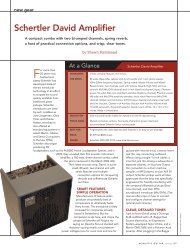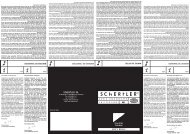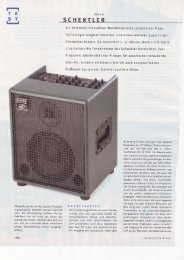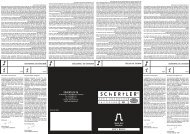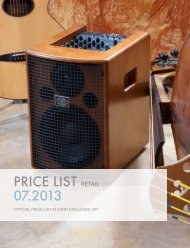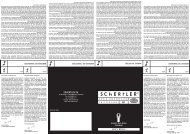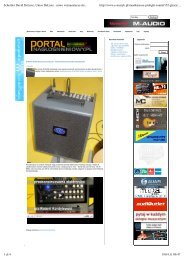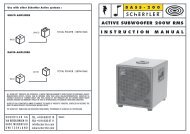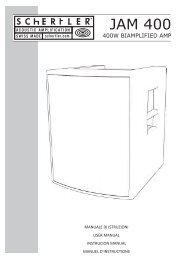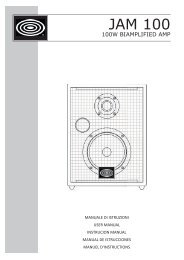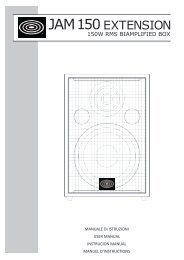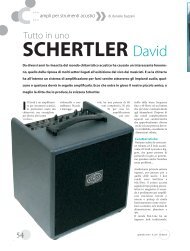user manual - Schertler
user manual - Schertler
user manual - Schertler
- TAGS
- manual
- schertler
- schertler.com
Create successful ePaper yourself
Turn your PDF publications into a flip-book with our unique Google optimized e-Paper software.
1.1.<br />
1.5.<br />
1.2.<br />
1.3.<br />
1.4.<br />
1. MIC-IN<br />
1.7. 1.6.<br />
1.1. MIC-IN<br />
This microphone input is electronically balanced for XLR type connections. It has been optimized for<br />
connecting microphones or other<br />
transducers having low impedance and low level. The input is perfect for dynamic or condenser vocal<br />
microphones.<br />
1.2. PHASE<br />
In case of feedback, or unwished e�ects between di�erent channels use the phase reverse switch!<br />
1.3. 48V<br />
Phantom power supplies the XLR connector with 48V for powering condenser microphones.<br />
1.4. GAIN<br />
This variable gain preampli�er adjusts the sensitivity level to ensure the best possible processing of<br />
the signal through the channel.<br />
It is important that this input level be set and optimised in the best way to achieve the cleanest sound<br />
possible.<br />
1.5. DRY OUT<br />
signal can be sent to external systems, for example to another mixer. If you wish to record your music,<br />
connect your recorder to the same output and start recording<br />
1.6. HIGH, MID, LOW<br />
These controls are devoted to high, mid and low frequency regulation. O�ering cut and boost of +/-<br />
15dB, they allow a wide range of tonal variations to be explored. When the controls are positioned<br />
dentrally there is no cut or boost of the selected frequency band.<br />
1.7. RESON<br />
The Resonance (notch) �lter cuts the frequency of 150Hz, to reduce low-frequency feedback.<br />
- Left: no attenuation (�at)<br />
- Right: maximum<br />
1.8. VOLUME<br />
This rotary control regulates the channel volume.<br />
1.8.


